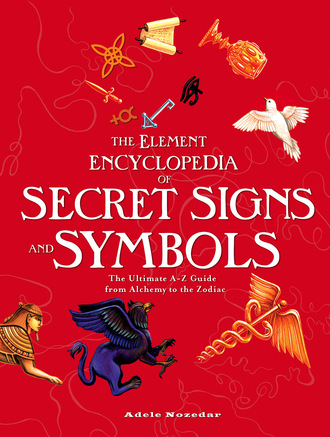
Полная версия
The Element Encyclopedia of Secret Signs and Symbols
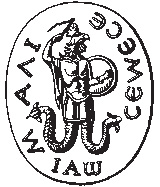
Abraxas was no ordinary god, however. As Ruler of the First Heaven he had dominion over the cycles of birth, death, and resurrection.
Whatever the case, the symbol for Abraxas is a very unusual one. He has the head of a chicken, the torso of a man, and two serpents for legs. He holds a shield in one hand and a flail-like instrument in the other. The image of Abraxas was carved onto stones (called Abraxas Stones) and the stone used as a magical amulet. Occasionally Abraxas will appear driving a chariot drawn by four horses; these horses represent the elements.
This Abraxas symbol was adopted by the Knights Templar, who used it on their seals. No one knows precisely why this symbol was of particular significance, but a hidden secret within the name “Abraxas” may provide a clue.
In Greek, the 7 letters are the initials of the first 7 planets in the Solar System.
Further, if we apply numerology to the name then it adds up to 365, not only the number of days in a year but also the number of the spirits that those same early Gnostics believed were emanations from God.
Added to the mix is the speculation that the supreme magical word, “Abracadabra,” may derive from the name Abraxas, which means “harm me not.”
ADRINKA SYMBOLS
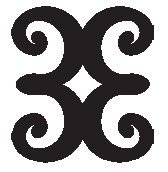
Originating in Ghana, Adrinka symbols are now related, in general, to the Ashanti people. There are hundreds of these signs, which were originally printed on the cloth that was used in sacred ceremonies and rituals, funerals in particular. “Adrinka” means “goodbye.”
The patterns are created using a block printing method. The symbols are cut into a calabash gourd, and then stamped onto the cloth in ink or paint.
The language of Adrinka is rich and varied, embracing philosophical concepts and sociological ideas as well as straightforward words. The symbols take their influence from plants, animals, the landscape, and the natural world, as well as manmade objects. There is a vast Adrinka vocabulary, with complex meanings attached to what might appear, at first glance, to be simple little doodles.
AESCLEPIUS WAND
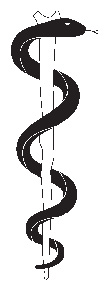
Often confused with the Caduceus, the Wand or Rod of Aesclepius is the true symbol of the medical profession. The symbol belongs to the Greek God of Healing whose name it bears. Although the origins of many symbols are indeterminate, there is a theory that the Aesclepius Wand came about due to the method of removal of a certain parasite that was drawn gradually from the body by winding it around a stick. However, the serpent is a powerful symbol of healing, despite its toxic nature. In general, the symbol of the serpent rising up toward the top of a pole or tree is representative of matter transforming into spirit and of enlightenment.
AGNUS DEI
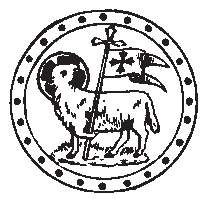
Agnus Dei translates as the “Lamb of God,” and is also known as the Paschal Lamb. It is symbolized pictorially as a lamb with a halo, proudly trotting along, carrying a banner and a cross.
Lambs were commonly sacrificed during the time of the Passover, the blood sprinkled in the doorway or rubbed onto the lintel, so the connection was made because of the sacrifice of Christ.
Part of the Catholic mass includes the plea, repeated three times:
Lamb of God, who takes away the sins of the world, have mercy on us.
AKHET

In Egyptian, Akhet means “dawn.” This symbol—often made into an amulet by the Ancient Egyptians—symbolized the new Sun rising over the sacred mountain.
The symbol sometimes features the double-headed lion, or Aker, that guards it, and is also related to the glyph used to denote the astrological sign of Libra.
AKWABA

This is an African fertility symbol belonging to the Ashanti tribe. The Akwaba is a doll, usually carved of wood, which commands the same attention as a real infant. It is dressed, washed, and even “fed” until the human child is actually born, an example of sympathetic magic believed to ensure the arrival of the true baby.
ALCHEMY
Alchemy is an ancient art, at the heart of which lies the manufacture of a mysterious substance called the Philosopher’s Stone, the highly desirable and legendary object that is said to transform base metals—such as lead—into gold.
However, the gold in this instance symbolizes not just the valuable metal, but enlightenment and eternal life, and Alchemists are concerned with their own spiritual and personal development as well as the pursuit of the seemingly unattainable goal. The Chinese differentiate these different kinds of alchemy as nei-tan (the alchemy of spiritual transformation) and waitan (the straightforward “lead-into-gold” type).
The motto of the Alchemists is Solve et Coagula, meaning “Solution and Coagulation.”
The work of the early Alchemists was necessarily a secretive and clandestine matter, and its secrets are still held within a rich encrustation of symbols, pictures, oblique references, double meanings, and riddles. Alchemical symbolism features animals, birds, colors, and parables as well as archetypal symbols such as the Cosmic Egg.
The key tenets of alchemy are encompassed in something called the Smaragdina Tablet, or the Emerald Tablet, which is said to have been found by Alexander the Great in the tomb of Hermes Trismegistus (Hermes the Thrice Great) who is the founder of all things alchemical. The Alchemical Tradition exists/existed in Ancient Egypt, China, and India, but its most recent incarnation was in medieval Europe.
Those who dabbled in alchemy include the famous and the infamous, such as John Dee (astrologer to Queen Elizabeth I), Paracelsus, Albertus Magnus, Christian Rosenkreuz, Nicholas Flamel, and Isaac Newton. Some of the chemical treatises are befuddling to even the most learned of scholars, but the very word “alchemy” is almost in itself a symbol, conjuring up images that are magical, mystical, and marvelous.
ALCHEMICAL SYMBOLS
Although some of the alchemical symbols occasionally varied a little between practitioners, the following lists show the most commonly used interpretations. This list is by no means comprehensive but gives a good cross-section of the “feel” of these mysterious signs. It is interesting to see how many of these alchemical symbols have survived to the present day, and how the meanings of the simpler symbols are so universal that they extend well beyond the reaches of this one system.
The four basic elements
Air
Water
Fire
Earth
The four seasons
Spring
Summer
Fall
Winter
The seven planetary metals
Sun gold
Moon silver
Mercury mercury or quicksilver
Venus copper
Mars iron
Jupiter tin
Saturn lead
The alchemical spirits
The World Spirit
The Spirit of Silver
The Spirit of Mercury
The Spirit of Copper
The Spirit of Tin
ALL SEEING EYE
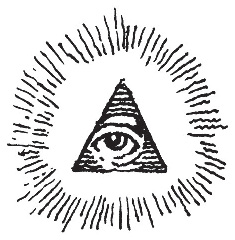
Probably the best-known use of the All Seeing Eye symbol is as a part of the design of the Great Seal of the United States of America, which appears on the US dollar bill. Set within a triangle, a single eye is surrounded by rays of light; on the Seal, the whole rests on top of an unfinished pyramid.
There is something quite sinister about this disembodied, ever-watchful eye, although its symbolic meaning is simple; it represents God watching over humankind, and is also known as the Eye of Providence.
The eye itself is a powerful and popular symbol, and the All Seeing Eye has its roots in the Egyptian Eye of Horus. The addition of the triangle represents all the different aspects of the shape, including the Christian Trinity of the Father, Son, and Holy Ghost.
The fact that the Great Seal was a symbol that belonged to Freemasonry and alchemy prior to its adoption as part of the Great Seal of the USA has given rise to many conspiracy theories. That the All Seeing Eye is also the symbol of the Illuminati, a secretive organization within the Catholic Church, has further bolstered these theories.
In Freemasonry, God is known as the Architect of the Universe. The first reference to the All Seeing Eye as a Masonic symbol appeared in 1797, although the Great Seal was designed in 1776 and first used in 1782. It is whispered that Masonic influences must have been at work when the Seal was designed; no one will ever know for sure, although those magical symbols that encrust the Seal must have been put there for a reason. What is certain is that when the Eye was adopted as part of the design of the Dollar in 1935, it was as a direct result of the influence of the President, Franklin Roosevelt, who had no reason to conceal his Masonic affiliations.
ALMADEL
This is a particular kind of magical amulet, made of wax so that the secret names of demons can be written or engraved upon it. The whole is then melted so that its creator need never reveal the secret. The color of the almadel should correspond to its magical intention.
ALTAR
The root of the word “Altar” means “high” or “high place,” and therefore the altar is symbolic of the Holy Mountain, given that it is raised above its immediate surroundings and is used as a focus for holy rites and sacred practices. Altars, as such, exist in all religions and cultures, the symbolic meaning remaining unchanged across diverse belief systems. Altars certainly provide the main focus within churches, but they are not confined to large public buildings; many faiths have a small domestic altar in the home.
AMULET
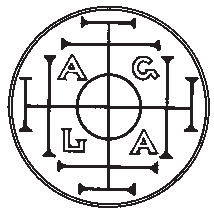
Although it is worn on the body as a piece of jewelry, the amulet is different from “normal” jewelry in that it holds a magical significance that is peculiar to its owner or wearer. Generally, the powers of the amulet fall into two specific categories, either to bring luck or to avert evil; either of these qualities arguably reflect a positive or negative attitude on the part of the owner. The talisman is effectively the same thing as an amulet although its name derives from an Arabic word meaning “magic picture.” Therefore a charm made specifically and inscribed with the names of the spirits, the Seal of Solomon, and other mystical symbols is more likely to be referred to as a talisman.
Significant symbols for use as amulets include birthstones (or other gems according to their magical powers), astrological signs, specific symbols such as the Hand of Fatima or the cornus, and symbols specific to the religious and spiritual beliefs of the wearer, such as the cross, the star, words, names, and numbers.
Incidentally, both amulets and talismans are referred to as “charms;” the origin of this word has the same root as the Latin word for “song,” indicating the link between a magical sound and a magical intention.
ANKH

Essentially the tau cross surmounted by a loop or circle, the ankh is a prominent feature of Ancient Egyptian reliefs, artworks, and funerary paraphernalia. Like the tau, the ankh is a letter; specifically, it is a hieroglyph meaning “life.”
The volume of meaning that can be squeezed from such a simple symbol is awe-inspiring. The ankh represents the male and female genitalia, the Sun coming over the horizon, and the union of Heaven and Earth. This association with the Sun means that the ankh is traditionally drawn in gold—the color of the Sun—and never in silver, which relates to the Moon.
Putting aside the complexities of these separate elements, though, what does the ankh look like? Its resemblance to a key gives a clue to another meaning of this magical symbol. The Egyptians believed that the Afterlife was as meaningful as the present one, and the ankh provided the key to the gates of death and what lay beyond.
Powerful symbols frequently stray across into other cultures despite their origins, and the ankh is no exception. Because it symbolizes immortality and the Universe, it was initially borrowed by the fourth-century Coptic Christians who used it as a symbol to reinforce Christ’s message that there is life after death. The ankh is used by the Rosicrucians too. Even though its actual invention is shrouded in thousands of years of mystery, the ankh symbol can be bought in any high street jewelry store anywhere in the world. When Elvis Presley was criticized for wearing the “pagan” ankh among his many other crosses, he commented, “I don’t want to miss out on Heaven because of a technicality.”
ANTIMONY
See Gray Wolf.
APHRODISIACS
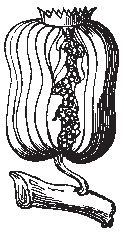
The Pomegranate Badge of Katherine of Aragon
The Greek Goddess of Love, Aphrodite, lends her name to an extensive list of foods and other weird and wonderful items that are supposed to increase the libido and enhance the chances of seduction and therefore fecundity. The issue of fertility has always been an overriding concern for humankind, and any substance that either enhances sexual prowess or increases the chance of conception has always been highly sought after.
Ancient man had a limited seasonal diet, and a bad hunt or the failure of a crop could literally be a life-or-death matter. Getting enough food to eat was an overriding concern. Chances of fertility are restricted if nourishment is poor, and so certain foods were given magical powers in the hopes that they might increase both male and female potency despite the limited diet. There is a marked differentiation between the foods that increase fertility versus the ones that enhance sex drive, and given that early man did not know about the chemical constituents of food, many aphrodisiacs were chosen as such primarily because of their symbolic significance. The Doctrine of Signatures—the notion that a plant or a feature of an animal that is similar in appearance or quality to a body part could be beneficial to the organ it resembles—had an important part to play in deciding which foods had aphrodisiac qualities. Rhinoceros horn, for example, still carries a frisson as a stimulant to sexual appetites, as does Spanish Fly. Both these ingredients, sort of mystical precursors to Viagra, were ingested by men in eager anticipation of increased virility.
Pliny the Elder and Dioscordes documented many of these aphrodisiacs as far back as the first century, and it is likely that they would have been regarded as such for some time prior to this.
The behavior and lifestyle of certain animals made them fertility symbols, too. For example, the sparrow, a prolific breeder, was sacred to Aphrodite and its blood was a popular ingredient in love potions. Steak was thought to contain all the virility of the animal it came from, the bloodier the better. Ground rhinoceros horn is symbolic of the libido but the power of the rhino is also perceived as the ultimate in male sexual energy.
This ancient, visceral belief in the power of appearances has meant that many of the original foods that were considered to have aphrodisiac powers by ancient man still carry the same meanings today, despite their actual chemical constituents. It is true to say that certain foods actually do have aphrodisiac powers purely because of these old beliefs, and generally owe more to folklore and symbolism than to fact; however, a symbol is a potent force and often the association alone is enough to bring about the desired effect. For example, a dinner date where oysters and strawberries are on the menu will leave no doubt about the intended conclusion to the evening.
To our ancestors, any kind of food that resembled the penis, the vagina, or constituent parts thereof, carried powerful suggestive meanings, although latterly our ability to analyze certain minerals and trace elements has proven that some supposedly aphrodisiac foods may actually deserve their reputation. For example, the fifty oysters that Casanova reputedly managed to swallow every day for breakfast not only resemble the female sexual parts in scent, texture, and form, but it has also been discovered that their high zinc content may indeed help enhance the libido; a large proportion of zinc is spent when men ejaculate.
For ancient man it was not always necessary for the foods to be eaten for them to have the desired effect. Some of the weird and wonderful things considered to have aphrodisiac qualities were toxic, but could work their magic simply by close proximity. The berries of mistletoe, for example, were a reminder of the semen of the Gods and the little crosses on the undersides were kisses, but it would be unwise to eat them.
Seeds, nuts, bulbs, and eggs, because they are full of potential new life, were considered as aids to fertility; snails, too, were considered to enhance sexual appetites because of the viscous fluid of the trails they leave behind, although slugs are not considered to have any aphrodisiac qualities whatsoever.
Here is a brief list of some of the foods that have been considered, at some time or other, to have aphrodisiac qualities.
NUTS, SEEDS, AND BULBS
Aniseed
Falls into the category of seeds. Also aids digestion and sweetens the breath which could explain why the Romans considered it a useful ingredient for seduction.
Star anise
Because of its shape, the star anise was sacred to the Goddess and therefore a potent fertility symbol.
FRUITS
In general, all seed-bearing fruits are aphrodisiacs. Their numerous seeds, their texture, scent, and color make them a naturally sexy foodstuff.
Apple
Infamous as the fruit that Eve gave to Adam, a symbol of sexual awakening.
Cherry
Sensuously red and juicy, and containing a potent symbol of new life inside the stone. “Popping the cherry” is a slang term for losing one’s virginity.
Raspberries and strawberries
Libido enhancing because of their color, their many tiny seeds, and their resemblance to nipples.
Tomato
The tomato is also called the “Love Apple” and is regarded as an aphrodisiac, because of the prolific number of seeds contained within it. However, the name itself is the result of an accidental misinterpretation. Because they were originally a yellow color they were called “Pomo D’or” in Italy, the Apple of Gold. It was also called the “Pomo d’Moro”—the apple of the Moors, referring to its Spanish origins. From here, it was just a slip of the tongue to the French, “Pomme d’Amour,” or Love Apple.
MALE GENITALIA
Many of these are self-explanatory, all considered powerful simply because of their shape. Asparagus, carrots, and cucumber are just a few of the “phallic vegetables.”
Avocado
The Mexicans called the avocado tree the “testicle tree,” since the fruit dangles down in pairs. The sensual texture of avocado adds to its reputation.
Banana
The banana flower resembles the phallus. Islamic tales say that Adam and Eve covered their sexual parts with banana leaves rather than the more common fig leaves.
Cloves
Because they resemble little phalluses, cloves were considered to enhance male potency. The clove tree was planted to signify the birth of a baby boy in certain parts of Indonesia, the health of the tree reflecting the health of the child as it grew up.
FEMALE GENITALIA
Almond
As well as being the same shape as the vesica piscis, the sacred doorway through which matter emerges into spirit, the almond is a nut and therefore carries the potential for new life.
Fig
The plethora of tiny seeds inside the fig is symbolic of fertility, and the moist plumpness of the fruit has a very sensual, feminine element to it.
Oyster
The oyster’s resemblance in form, scent, and texture to the female genitalia is renowned. Oysters have had a long history as an aphrodisiac and their reputation is well known. The pearl that is sometimes found inside the oyster was said to increase the powers of arousal, because it resembles the clitoris.
Other shellfish, such as mussels, fall into this same category.
SPICES AND HERBS
Anything sharp tasting or pungent is believed to stimulate the senses, so spices are often used as libidoenhancing ingredients.
Asafetida
This is the ground root of a fennellike plant. It has a powerful odor, and despite its folk name, Devil’s Dung, it is used as a sexual stimulant in Ayurvedic medicine.



